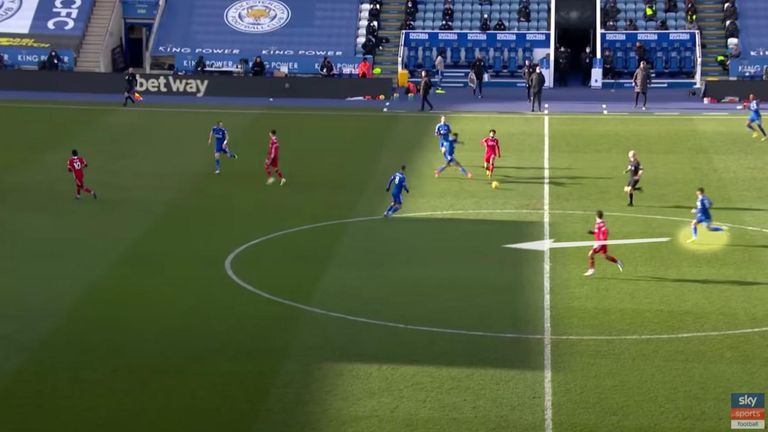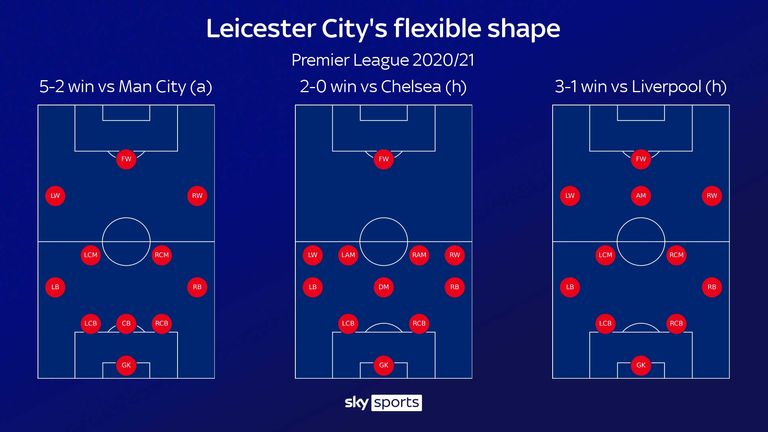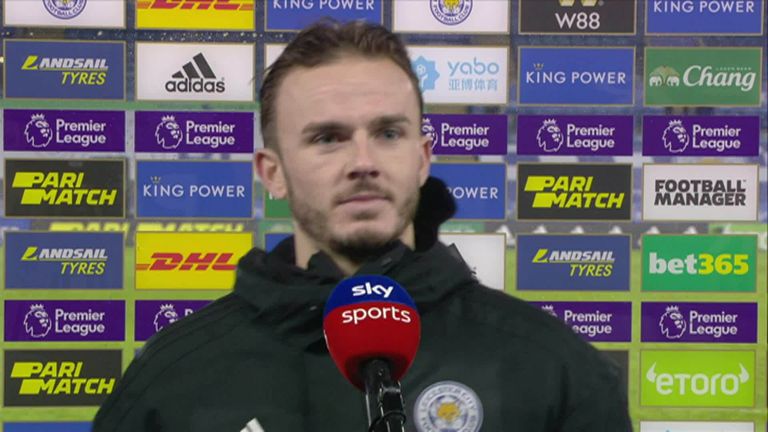Possession was once Brendan Rodgers’ mantra. This is the coach whose first season in the Premier League with Swansea saw the newly-promoted side dominate the ball like no competition newcomer ever had. Only Manchester City completed more passes.
His commitment to this passing game resulted in Swansea being applauded from the pitch at Anfield that season. He landed the Liverpool job soon after. But it has been Rodgers’ willingness to adapt his approach that has taken him to a new level at Leicester.
September brought his first win over Pep Guardiola. In November, Jose Mourinho was beaten for the first time. There was a first victory over his former employer Chelsea in January and, earlier this month, Rodgers secured his first win over Jurgen Klopp.
When James Maddison puts air quotes around the term ‘big six’ it is easy to see why. Leicester, champions more recently than most of those six clubs, not only finished fifth last season and look well placed to better it this time around, but they keep beating them.
Their record against these sides this term stands at five wins, one draw and one defeat. If there was a mini-league between this ‘big seven’ then Leicester are currently on course to win it.
The reason for that is because Rodgers, the possession man, has found a way to win nine of the 10 matches in which his side have had less than half the ball. They were ruthless in that 5-2 win at Manchester City and the come-from-behind win over Liverpool.
“Maybe 10 to 12 years ago I was very fixed on one system and one way of working,” he tells Sky Sports. “In the modern game, you need more than one system and more than one way.”
Leicester are capable of complete dominance. That is how their season began with a 3-0 win at West Brom in which they enjoyed 64 per cent of the possession. They followed that up with a 4-2 win over Burnley – and 68 per cent possession – at the King Power Stadium.
But the key to their league position, and 25 games into the season they are in third, only four points shy of their tally at this stage of the title-winning campaign, is that Rodgers has the attitude – and the players – to shift between ideas, forever optimising the approach.
“We still have our principles,” he explains.
“We want to dominate games. We want to press as high as we can. But naturally, when you play against top, top teams, the press does not have to be at the high end of the pitch. You might deny the space a little bit deeper to exploit that space when you have it.”
It is interesting that Rodgers frames it in this way. In his view, it is not that Leicester are sitting in a deep block to counter-attack against the league’s strongest sides. They still press and, according to Opta, still rank among the top six for pressed sequences.
But they sometimes look to turn the ball over in a different zone of the pitch in order to allow the space for Harvey Barnes and Jamie Vardy to exploit when running at defences.
Barnes’ goal against Liverpool was the result of a turnover near the centre circle. Vardy’s goal just minutes earlier came when Youri Tielemans collected the ball in his own half. Leicester were not sat that deep in either scenario but were able to counter.
It was another long pass from Tielemans that set Cengiz Under away to square the ball for Vardy to score in the 1-0 win over Arsenal at the Emirates Stadium in October. The home side had dominated the ball for long periods of the game but Leicester found a way to win.
“What we have here is that we are able to find the balance between possession, pressing, counter-pressing and counter-attack. We can slot into whatever we need to play to win a specific game. That is a huge credit to the players that we have been able to adapt to that.
“That is the maturation of the team and it is the maturation of me as a coach. That balance allows you to be prepared going into every game and find the solutions in those games.”
How Rodgers makes systematic change work for Leicester
There have been times when Rodgers has been accused of tinkering too much. Flitting between systems always leaves coaches open to criticism when the result does not follow.
But nine Premier League wins with a back four and six wins with a back three shows that both systems can work. This flexibility in formation and style has given players the confidence to believe that they have the tools to win in any number of ways.
Importantly, it has enabled them to change within matches. Against Liverpool, the switch to a diamond midfield with Barnes moving up front turned the game. At Everton, it was the half-time instruction to look to the flanks that enabled them to get back into it.
In the 2-0 win over Chelsea, it was a minor tweak at the interval that saw them through. “Credit to the manager, we had a little switch at half-time to go to a 4-4-2 out of possession,” Maddison told Sky Sports. “Just little things like that, thinking on our feet.”
Maddison has attracted praise for the openness of his interviews and his youthful exuberance is infectious. Tielemans, who, at 23, is six months younger than Maddison, is another of the next generation at Leicester now emerging as genuine leaders.
With Vardy and Kasper Schmeichel remaining key players, as well as the influence of Wes Morgan and Christian Fuchs still being felt, that blend of youth and experience is there.
It is something that Rodgers has had to work to foster.
“In the modern game, I think it is the job of the coach or the manager to find that balance,” he explains. “When you have senior players who have been brought up a certain way you can very easily look at the younger player and think they are not as professional or purposeful as they were when they were young. But life is different.
“When you come in and you are managing those challenges, you get to that point where you start to really see each other. The senior players now look to the younger players and have an admiration for them because they don’t have any fear.
“The young guys look up to the senior players because they see that experience, that support and that knowledge which is absolutely critical for their development because a young player will not develop if he does not have that experience around him.
“I look at what we have. I always tend to try and have that mix of real, top senior professionals alongside a group of young and hungry up-and-coming players. Here at the club, we have a great balance with our senior players and our young players.
“Both of them are aligned and coming together really well.”
In a sense, Rodgers embodies that amalgamation of youth and experience himself. Despite it being almost a decade since he first managed in the Premier League, he is only 48 years old. Thirteen of the other 19 bosses in the competition are older than him.
He has remained fresh enough to adapt but is now experienced enough to be so secure in his beliefs that making changes has not felt like a compromise but an evolution.
Seven years after taking the Premier League title race to the final day of the season with Liverpool, and four years on from his first treble with Celtic, Rodgers is a better coach than ever before. Leicester are the beneficiaries. If there is a big six, they are in it.





